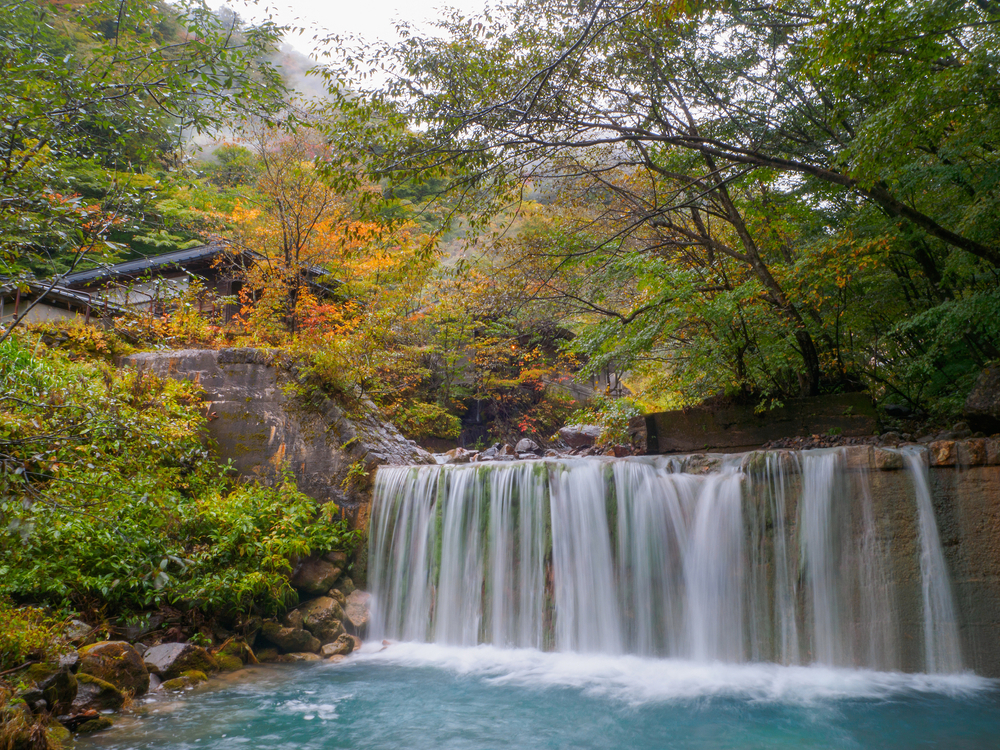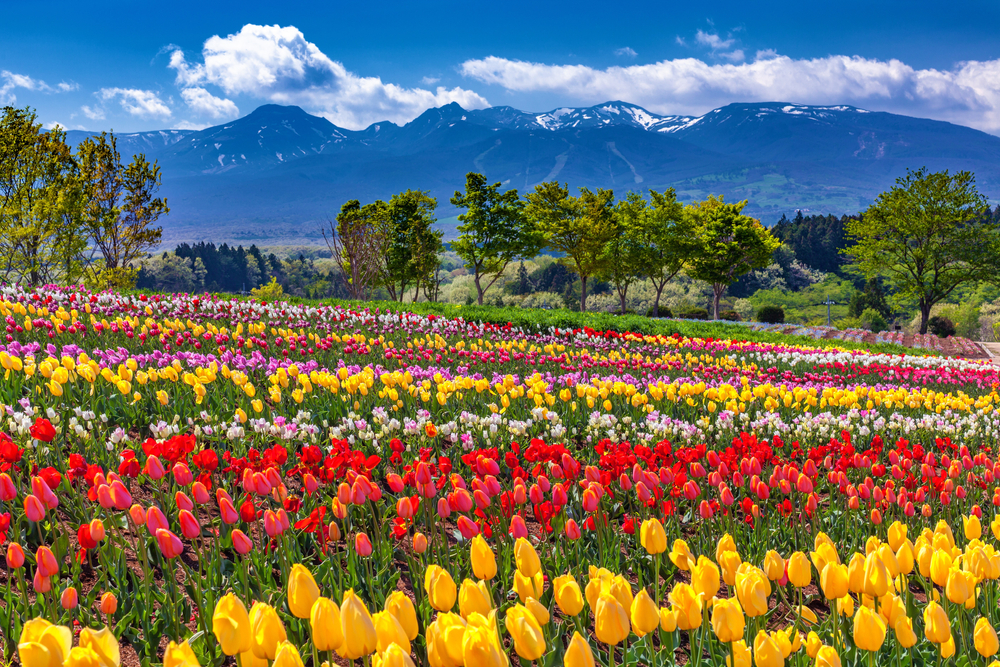As Tokyoites are well aware, opportunities abound for short getaways from the frenetic pace of life in the metropolis. And while beach lovers may be inclined to head toward the coasts, the Nasu region in nearby landlocked Tochigi prefecture brims with rich nature – along with stylish resorts and culinary offerings that rival those of any urban center.
Timeless destination for flower gazing, onsen bathing and mountain trekking
Each time of year is special in its own right for appreciating the grandeur of nature in the Nasu region. Unique seasonal opportunities include daffodils and dogtooth violets in spring, azaleas and lilies in summer, striking blue gentiana and fiery foliage in autumn, and calm snowscapes in winter featuring Japanese white pine – the Nasu area’s official tree.
This is hot spring country, and a dip in the local onsen is a gloriously healing way to enjoy the area’s verdant natural vistas. The 1,200-year-old Shiobara Onsen features an abundance of minerals, with waters varying from translucent to milky. Adventurous bathers should also head to the village of Okushiobara, where a number of secluded pools allow nature to be experienced at its rawest, including sulfuric clouds billowing from the vents of the nearby volcanic mountains.
Slightly further to the northeast at the foot of Mount Chausu, the area’s resident active volcano, lies the village of Nasu Onsen. Preeminent Edo-era warriors were said to have enjoyed taking their baths here at Shika-no-yu, the prefecture’s oldest bath house, whose known history dates back to the seventh century.
The adjacent Nasu Yuzen Shrine houses the god of onsen bathing, and worshippers historically paid respects here to local mountain deities. Pack your hiking shoes for a trek up the mountain, which offers panoramic vistas of the expansive Nasu Highland.
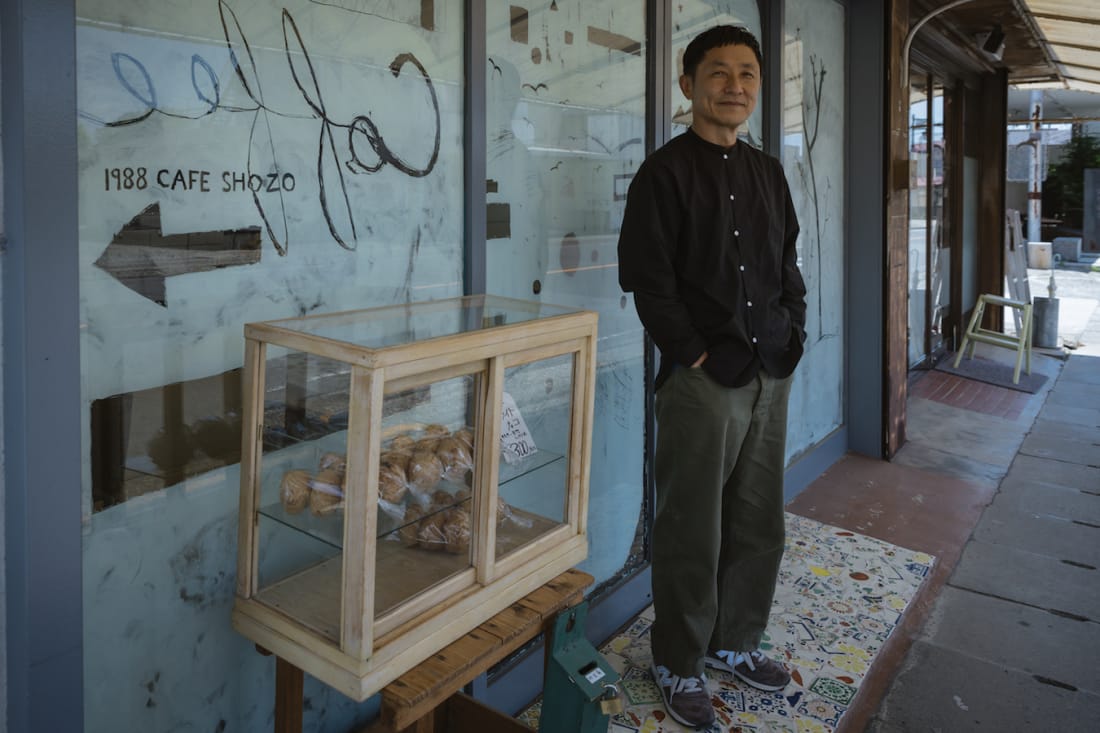
Shozo Kikuchi | Photo by Solveig Boergen
Caffeinate Along Shozo Street
Situated between these two onsen villages, in the Kuroiso district of Nasushiobara city, lies what is arguably one of the country’s most unique coffee cultures.
Shozo Kikuchi, born into a local farming family, fulfilled his dream of starting his own café with 1988 Café Shozo (named for the year it opened), followed several years later by the nearby Nasu Shozo Café. Both locations feature his richly roasted coffee and famous scones with cream, as well as a stylish vibe that helped touch off café culture throughout Japan at a time when it was still largely unknown.
The area surrounding Kikuchi’s original café is today known as Shozo Street, and it is alive with a vibrant collection of shops and restaurants. These include Chus, a combination hostel, café and market showcasing local vegetables and regional foods from throughout Japan; and Italian restaurant Cuore, where talented one-man-show Tsuyoshi Naoi prepares artful Toscana fare in a cozy, atmospheric setting.
More eclectic shops and restaurants continue to sprout up on Shozo Street and its environs, giving this area an altogether unique feel that invites a weekend of relaxed exploration.
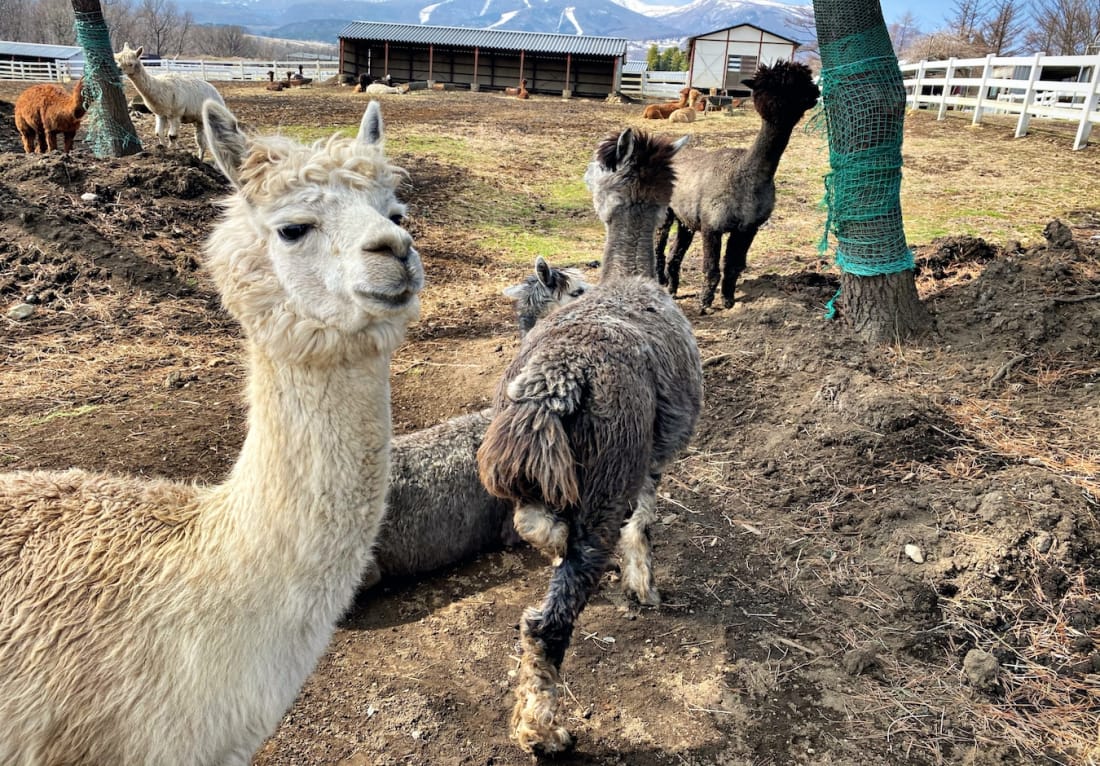
Nasu Alpaca Farm | Photo by Solveig Boergen
Local attractions for every taste
Highway 17, which winds its way northward from Kuroiso toward the Nasu Highlands, is lined with more inviting shops (including Shozo’s second café) that are excellent for an afternoon wander.
Museum lovers will also appreciate the region’s offerings, which include N’s Yard showcasing the work of internationally lauded contemporary artist Yoshitomo Nara (who is also a local resident), and the Cannabis Museum, which recounts the intriguingly complex (and generally misunderstood) history of hemp in Japan.
Finally, take the kids (including adult-sized ones) to cavort with the large animals roaming the Nasu Highlands, including the cows and goats at the Minamigaoka Dairy Farm; and the Nasu Alpaca Farm, whose furry creatures have traveled all the way from the Peruvian Andes.
For unique nighttime accommodation, consider renting out a yurt at the Mongolia Village Tenger, which has onsite hot spring baths, and also serves as somewhat of a cultural center spearheading exchanges between students in Nasu and Mongolia.
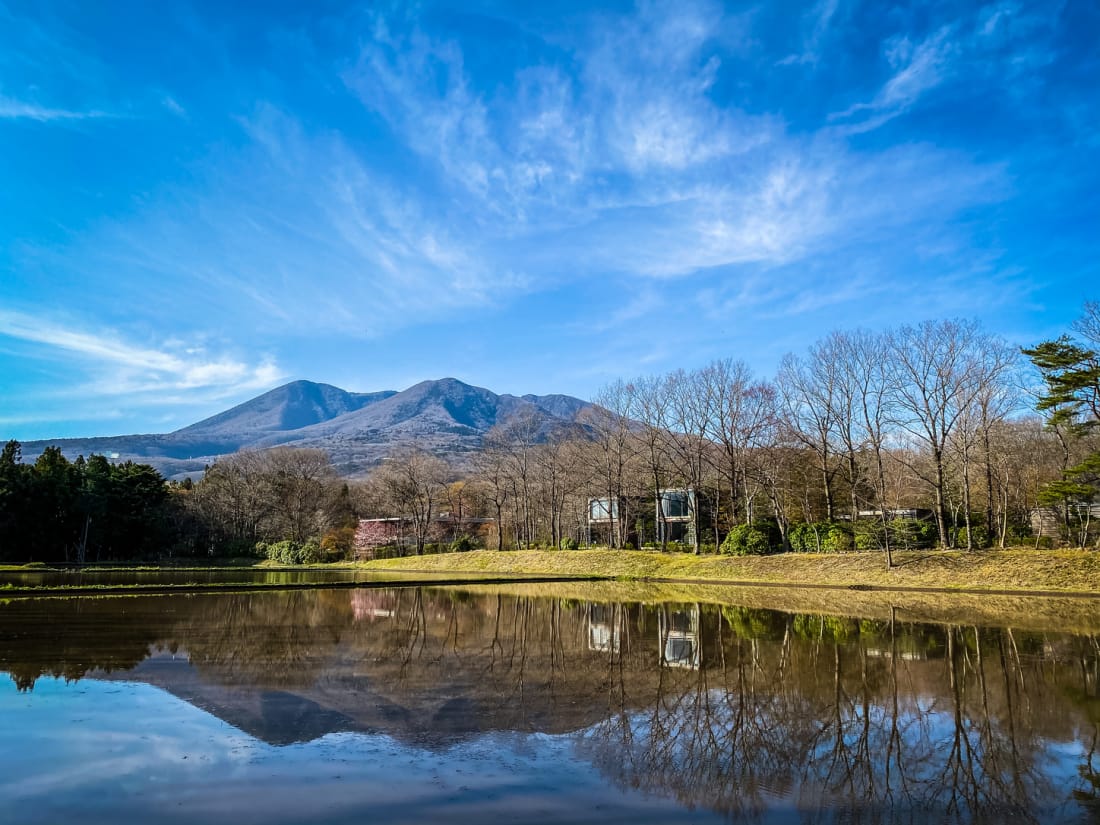
Hoshino Resorts Risonare Nasu rice field | Photo by Solveig Boergen
Experience Agriturismo at Hoshino Resorts Risonare Nasu
If you’ve got a special occasion to celebrate (or a few coins to spend), consider splashing out for an unforgettable experience at the Hoshino Resorts Risonare Nasu, Japan’s first-ever agriturismo resort. Located at the foot of the Nasu Mountain Range, a stay here immerses you in the deep tranquility of nature, from softly croaking frogs in the onsite rice paddies to lush walking trails on its grounds.
A total of 120 different herbs and vegetables are grown here in the greenhouse and fields, where a team of knowledgeable guides oversees immersive agricultural experiences including soil preparation and vegetable harvesting. The resort also engages in community initiatives including workshops for guests on rice planting and harvesting led by local farmers, and a collaboration with nearby dairy farms to offset food loss through the production of an original milk jam that is used to create desserts like scrumptious thick shakes.
Dinner at onsite restaurant Otto Sette Nasu, which fuses local cuisine with that from the Italian region of Toscana, lifts you into a new sensorial dimension. From its candle-lit lobby to bergamot-infused hot towels, this restaurant spares no luxury.
Vegetable-oriented cuisine is celebrated at the resort’s other onsite restaurant, Shaki Shaki (an onomatopoeia term indicating a fresh crispness). On summer evenings, an agri-beer garden is set up featuring hammocks, candles and special seasonal drinks from the harvest such as red-eye beer cocktails and mojitos.
Onward and upward
The Nasu area suffered greatly during and after the triple earthquake, tsunami and nuclear disaster of March 11, 2011, although it has been steadily recovering. Your visit can help provided a much-appreciated boost to community revitalization, while also promising you lasting memories from a truly intriguing corner of the greater Kanto region.

